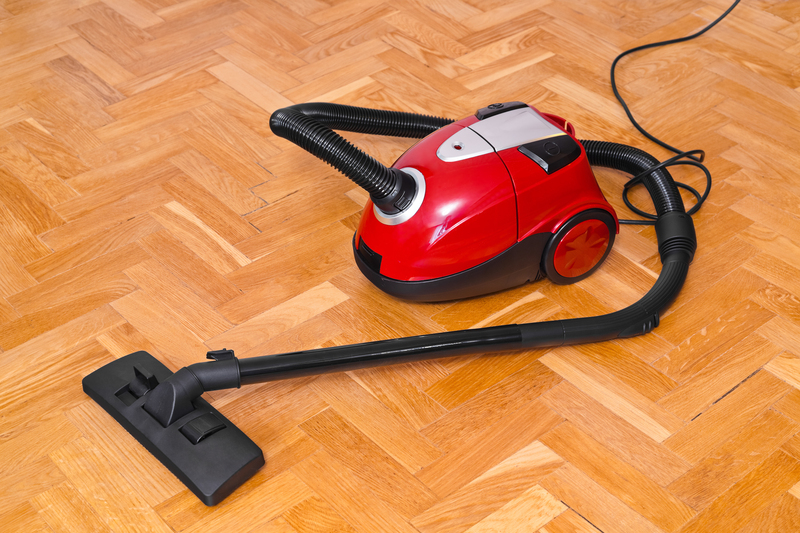A Guide to Restoring Your Stovetop's Shine
Posted on 22/05/2025
A Guide to Restoring Your Stovetop's Shine
Is your stovetop looking dull, grimy, or covered in stubborn stains? The stovetop is the heart of every kitchen--a place where delicious meals are made and memories are created. Over time, however, it can accumulate grease, stains, and burnt-on messes that diminish its sparkle and make cooking less enjoyable. In this comprehensive guide, you'll discover how to restore your stovetop's shine, keep it spotless, and prolong its lifespan. Whether you have a gas, electric, or glass cooktop, follow these proven tips and techniques to bring back that just-like-new gleam your kitchen deserves!
Why Restoring Your Stovetop's Shine Matters
A sparkling stovetop isn't just about appearances. Restoring your cooktop's shine offers several benefits:
- Prevents Permanent Damage: Regular cleaning stops stains and burnt-on residue from permanently discoloring your stovetop.
- Improves Kitchen Hygiene: Leftover food debris harbors bacteria and can attract pests.
- Enhances Cooking Efficiency: Clean burners and surfaces ensure even heating and safer cooking.
- Boosts Lifespan: Proper care and maintenance keep your appliance working at peak performance for years.

Understanding Your Stovetop: Types and Maintenance Needs
Before you start scrubbing, it's essential to know your stovetop's material and structure. Each type has unique cleaning requirements to restore its shine without causing damage. Here are the most common stovetop types:
1. Gas Stovetops
- Components: Usually have grates, burners, and removable knobs.
- Material: Stainless steel, porcelain enamel, or cast iron surfaces common.
- Cleaning Needs: Regular removal of grates and burners for thorough cleaning.
2. Electric Coil Stovetops
- Components: Metal coils sit above a drip pan and metal cooktop surface.
- Cleaning Needs: Coils and pans should be detached for deep cleaning. Avoid soaking the coils in water.
3. Glass or Ceramic Cooktops
- Appearance: Sleek, flat surfaces--modern but prone to visible stains and scratches.
- Care Instructions: Use non-abrasive cleaners to preserve the smooth surface and shine.
Essential Supplies for Restoring Stovetop Shine
Having the right tools and supplies ensures you restore your stovetop's gleam without damaging it. Add these items to your cleaning kit:
- Microfiber cloths or soft sponges
- Baking soda and white vinegar
- Mild dish soap
- Non-abrasive scrubbing pads
- Stovetop-specific cleaner (for glass/ceramic types)
- Plastic scraper
- Old toothbrush
- Gloves (to protect hands from hot surfaces and chemicals)
Step-by-Step Guide: How to Restore Shine on Every Stovetop Type
Ready to make your stovetop sparkle as if it were brand new? Follow these tailored instructions for each cooktop style:
Restoring Shine to Gas Stovetops
- Turn off the stove and let it cool completely. Unplug or turn off the gas if possible for safety.
-
Remove grates, burner caps, and knobs.
- Soak them in hot, soapy water for 15-20 minutes.
- Use a soft sponge or old toothbrush to scrub away grease and food residue.
- If needed, sprinkle baking soda for extra scrubbing power.
-
Clean the stovetop surface.
- Wipe away loose debris using a dry microfiber cloth.
- Dab a solution of equal parts vinegar and water onto sticky spots and let it sit for a few minutes.
- Wipe clean in circular motions to restore the stovetop's shine.
- For stubborn stains, make a paste with baking soda and water, apply, let sit 10 minutes, and gently scrub.
-
Detail around the burners.
- Use a toothbrush or cotton swab for hard-to-reach spots.
- Dry thoroughly before replacing the grates and caps.
-
Polish the surface.
- Buff with a clean, dry microfiber cloth for a gorgeous shine.
- Optional: Apply a tiny drop of mineral oil to a cloth and polish for extra gloss, then buff off excess.
Restoring Electric Coil Stovetop Shine
- Unplug or turn off the stove and let it cool.
-
Remove drip pans and coils carefully.
- Wipe the coils with a damp cloth (never immerse in water).
- Soak drip pans in hot, soapy water and clean with a sponge or baking soda paste.
-
Clean the stovetop surface.
- Use a mild cleaner or vinegar solution for sticky areas.
- Sanitize and shine with a clean microfiber cloth.
- Reassemble once all pieces are dry.
How to Restore Shine on Glass or Ceramic Cooktops
- Ensure the cooktop is off and completely cool.
-
Remove loose debris.
- Use a soft, damp cloth or a handheld vacuum if needed.
-
Apply a stovetop cleaner or make your own paste (baking soda + water).
- Spread gently over stains and allow to sit for 5-10 minutes.
-
Gently scrub with a non-abrasive pad.
- Avoid steel wool or harsh pads that can scratch the surface!
-
Use a plastic scraper for burnt-on messes.
- Hold at a 45-degree angle and carefully scrape away residue.
-
Rinse and buff to a brilliant shine.
- Wipe off all residue with a damp cloth, then polish with a clean dry microfiber cloth for a streak-free finish.
Natural Solutions for a Gleaming Stovetop
Looking for eco-friendly, inexpensive ways to restore your stovetop's shine? Try these natural cleaning solutions:
- Baking Soda: Its mild abrasive properties lift stains and grease without scratching.
- White Vinegar: Dissolves mineral deposits and cuts through stubborn grease.
- Lemon Juice: Great for deodorizing and adding a fresh scent.
Pro Tip: Combine 1/2 cup vinegar with 1/2 cup water in a spray bottle. Mist over your stovetop after every use to maintain daily shine and freshness!
Troubleshooting Stubborn Stove Stains
Some stains require a little extra elbow grease to restore your stovetop's lustre. Here's how to tackle common tough spots:
-
Burnt-on Sugar & Caramel:
- For glass cooktops, warm the area gently (not hot), apply baking soda paste, cover with a wet cloth, wait 30 mins, then scrape gently.
-
Discoloration:
- Baking soda, diluted vinegar, and a polish designed for your stovetop material can renew dulled areas.
-
Sticky Oil Residue:
- Use a degreasing dish soap or a 1:1 mixture of vinegar and water for fast results.
If stains don't budge, repeat treatments patiently or call in a professional for advanced restoration, especially on modern, high-end appliances.
Preventative Tips for Maintaining a Shiny Stovetop
Restoring your cooktop's shine is just the beginning. Here's how to keep your kitchen centerpiece sparkling every day:
- Wipe Spills Immediately: Quick clean-ups prevent hard-to-remove stains.
- Use Stove Guards: Place drip trays beneath burners/coils to catch food debris.
- Avoid Abrasive Tools: Always choose soft cloths and sponge pads to prevent scratches.
- Maintain Regular Deep Cleans: Make it a habit to give your stovetop a deeper cleanse weekly or bi-weekly (depending on usage).
- Polish After Cleaning: Microfiber cloths buff away streaks and give that final beautiful sheen.
Common Mistakes to Avoid When Restoring Your Stovetop
Don't undo your hard work! Be cautious and avoid these stovetop cleaning pitfalls:
- Using Steel Wool or Metal Scrapers on Glass Surfaces: These can etch or permanently dull your cooktop.
- Letting Food Burn Repeatedly: Chronic burnt-on spills get harder to remove and may ultimately scar your stove surface.
- Neglecting Under the Grates or Coils: Grease buildup and crumbs accumulate quickly where you can't see.
- Skipping Rinse Steps: Residual soap or cleaner can cause streaks and attract more dirt.

Frequently Asked Questions About Stovetop Restoration
- How often should I clean my stovetop?
- For heavy users, light cleaning after each use and a deep clean once a week is ideal. Occasional cooks can opt for bi-weekly deep cleans.
- What's the best way to restore shine to a scratched glass cooktop?
- Use a commercial glass-ceramic cleaner and a microfiber cloth. Small scratches can sometimes be masked by buffing with baking soda and vinegar, but deep scratches may be permanent.
- Can I use oven cleaner on my stovetop?
- Only if the manufacturer recommends it--some oven cleaners are too harsh for stovetops. Stick to mild detergents or specific stovetop cleaners for safety.
Conclusion: Enjoy a Sparkling Stovetop for Years to Come
Restoring your stovetop's shine is a rewarding home project that pays off with every meal you cook. By understanding your cooktop's material, using proper cleaning steps and products, and establishing a smart maintenance routine, you'll keep your kitchen both attractive and hygienic. A sparkling stovetop not only enhances your cooking experience, but also preserves the value of your home's most-used appliance.
Now that you know exactly how to restore your stovetop's shine, enjoy every moment in your beautiful, gleaming kitchen!
Remember: Consistency is key. A few minutes of regular care is all you need to maintain that fresh, polished perfection every day!





